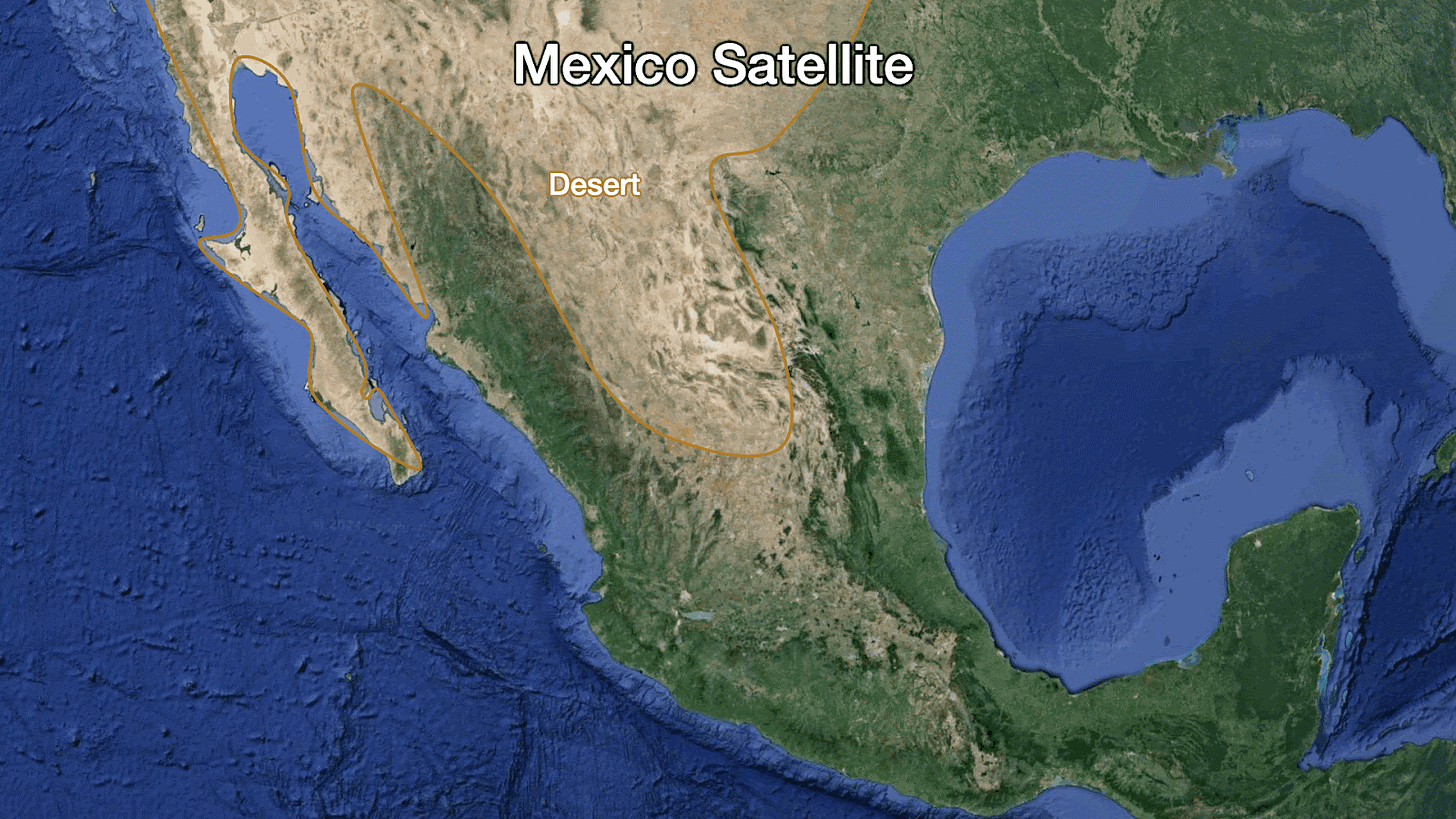Why Mexico Is Poorer than the US
A Terrible Geography, Spanish Heritage, and Management
Today, Mexico is weaker and poorer than the US. This video gives you all the clues you need to understand why:
At first sight, Mexico looks like a fortress.
The Mexican Fortress
Its population core is in the middle of the country:
It has sea and ocean protecting it on both sides:
It has strong mountain ranges defending it:
On Mexico’s western flank, the slopes of the Sierra Madre Occidental drop precipitously toward the Pacific Ocean, due to plate tectonics: As the Cocos Plate subducts under the North American Plate, it forms the mountains on the continent and a deep trench just off the coast.

To the north, it’s protected by one of the most inhospitable deserts in North America:
This is what it looks like:
In the south, it’s protected by so much dense jungle that there are only a handful of border crossings with its neighbors, Guatemala and Belize:
Bottom line, Mexico appears to be blessed by a geographic fortress that protects it from external threats.
Unfortunately, this geography has three massive weaknesses.
Mexico’s Achilles Heel
It’s called Veracruz.
For 400 years, Veracruz was the only Mexican port on the Gulf of Mexico. That’s because it has the deepest water in the area—albeit not that deep. You can see why based on the slope of the sea at that point (dark blue close to land).
Unfortunately, it’s not a good natural deep water port.
It’s a bad anchorage among sand banks.— Alexander von Humboldt, 1988, Political Essay on the Kingdom of New Spain.
The port is very insecure. It is not only open to this wind… No vessel is considered secure, unless made fast to rings fixed in the castle wall.—Joel Roberts Pinsett, 1969, Notes on Mexico Made in the Autumn of 1822.
While the mountainous heartland is populous, the gulf coast is mostly jungle, so its population is small. That means few goods are transported through Veracruz compared to many other comparable ports.

And Veracruz’s port is hard to defend. Compare its defenses and size to Rotterdam’s:

The other salient fact about Veracruz is that it’s close to Mexico City (CDMX):
There are mountains between them, but only 400 km (300 miles). And since Veracruz is so flat and has bad natural defenses, this exposes anybody landing at Veracruz to take over CDMX.
This has not happened just once in Mexico’s history. Or even twice. Mexico has been invaded by way of Veracruz six times! And the invaders conquered the capital three of these times!
This is of course the path Hernán Cortés took to conquer Tenochtitlan.
In the 1860s, the French landed in Veracruz and eventually took control of Mexico City, creating a French-led Mexican Empire.
But an earlier attack might have been the most painful. These were Mexico’s claimed lands when it achieved its independence from Spain in 1821:
Mexico lost 55% of this territory to the US after the US attacked Veracruz in 1847 and reached Mexico City a few months later:
Because Veracruz is so exposed, Mexico would like to control the sea access to the Gulf of Mexico. Unfortunately, it can’t.
It does control the Yucatán, which in turn allows some control over the passage between the continent and Cuba. But Mexico controls neither Cuba nor Florida:
And that brings us to Mexico’s second weakness.
An Almighty Neighbor
Florida is controlled by the US
Cuba is neutralized by the US
The global seas are controlled by the US
The US is Mexico’s northern neighbor
It’s the country that supported the independence of Texas
It’s the country that took 55% of Mexico’s land during the 19th century war
The US is only a few hundred miles away from Veracruz, and hence CDMX
The US has one of the best geographies in the world, especially with the Mississippi River Basin, which contains a massive amount of fertile flatland irrigated by navigable waterways, all of which give it both power and enormous wealth.
Since the Mississippi is the US’s heartland, and it provides access to the world through the Gulf of Mexico, the US will never expose this area. It’s the most important region for it to control.
This means Mexico will never be geostrategically independent—at least as long as the US exists. This forces Mexico to be the US’s subordinate partner.
All of this tells us why Mexico is weaker than the US.
But not why it’s poorer.
Why is it?















